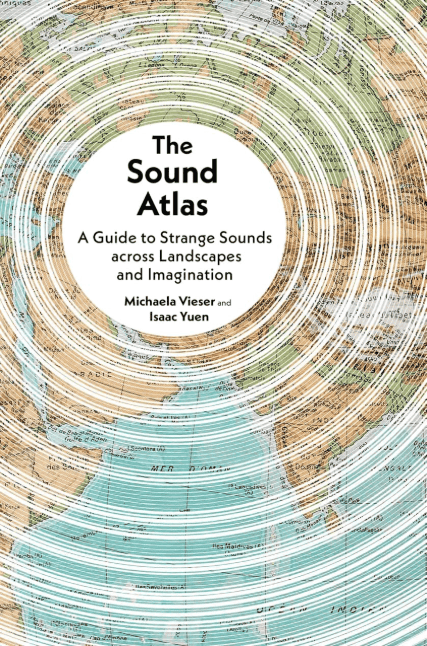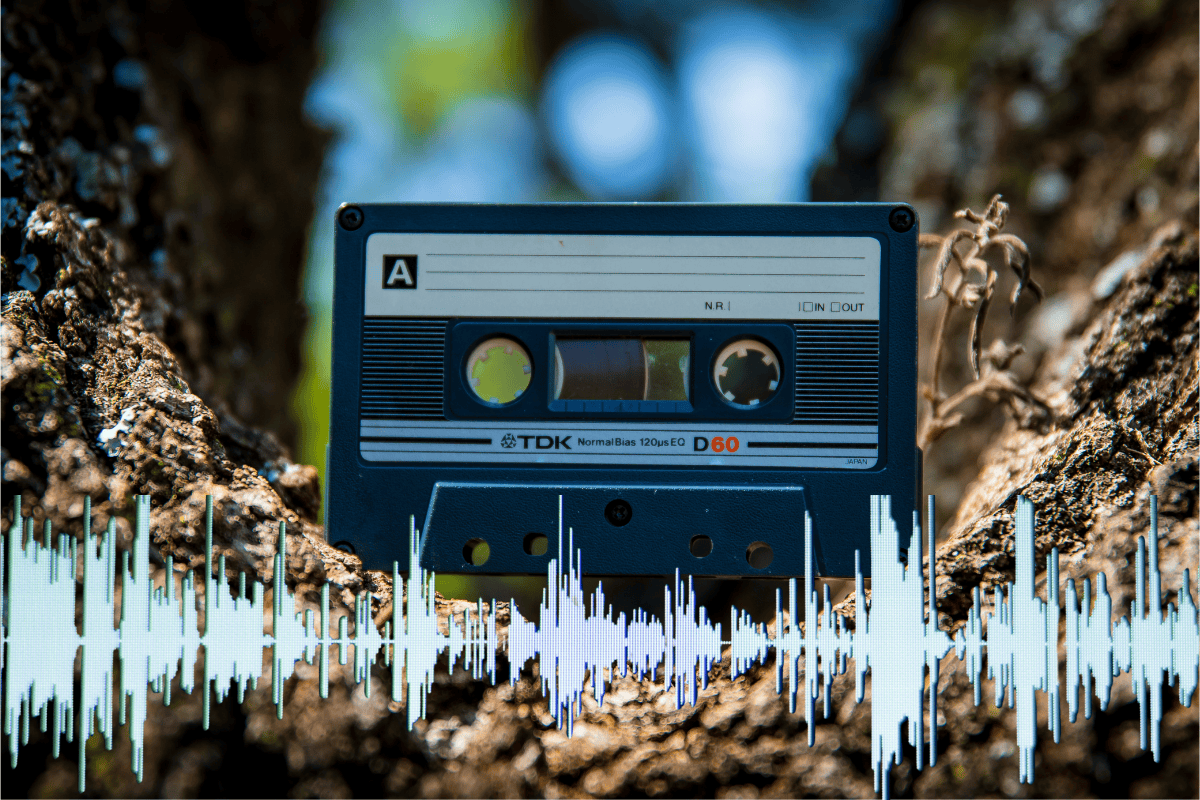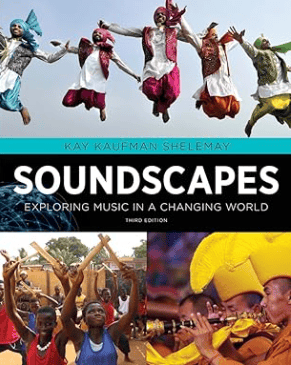Discover the sounds of travel, from laughing kookaburras to market chatter, church bells to ocean waves – a journey heard as much as seen.
It always starts with a sound.
The other day, walking through a shopping centre halfway across the world, I heard it, on the TV, that unmistakable cackle, a burst of laughter that seemed too human to come from a bird. The Laughing Kookaburra. In an instant, I wasn’t in the shop anymore. I was back in Perth, Western Australia, standing under the sun-drenched gums, the air dry and golden, the sky too big to hold.
Somewhere nearby, a Red-tailed Black Cockatoo let out its deep, rasping call, that haunting mix of strength and melancholy. The two birds together, one laughing, one lamenting – painted the soundscape of my memory more vividly than any photograph ever could. My sounds of Australia!
That’s the thing about travel: we remember what we saw, but it’s the sounds that sneak up on us later, unannounced, intimate, precise. They carry the weight of place in a way sights can’t. The low hum of a ceiling fan on a humid night in South Africa. The hush of snow falling in the Durmitor National Park in Montenegro. The echo of a bicycle bell in the Netherlands, or the rhythmic slap of waves against a wooden pier on the Garden Route, South Africa.
Travel isn’t only about what we see. It’s also about what we hear. Sound is the heartbeat of place; invisible yet unforgettable, a language that doesn’t need translation. When we listen closely, we don’t just recall the scene; we return to it.
So as you journey with me through these pages, I invite you to listen. To the small, living details that make each destination sing – the church bells, the market chatter, the rain on tin roofs. Because every trip has a soundtrack, and sometimes, all it takes is one echo to take us home again.
If you want to capture these memories yourself, a portable field recorder like the Zoom H1n Handy Recorder or Tascam DR-05X is invaluable — light enough to carry anywhere, yet powerful enough to record the subtle whispers of a rainforest or the echo of distant bells.
The Language of Places
Market Mornings
Before the day finds its order, the market is already alive, a kind of organized chaos that hums in every corner of the world. In Italy, it begins with voices: the musical rise and fall of bargaining, the rolling syllables that make even negotiation sound like opera. Vendors call out their wares with theatrical pride – “pomodori freschi!”, while the clatter of metal scales punctuates the rhythm like percussion. Somewhere, a knife hits a wooden board in steady tempo, slicing herbs that release their green perfume into the morning air.
I remember the market in Florence, Mercato di Sant’Ambrogio, where the morning light spilled through the high glass roof, scattering across pyramids of oranges and the glint of fish laid on ice. A woman laughed behind her stall, a deep, generous sound that carried over the murmur of the crowd. Even now, when I hear the metallic clink of coins or the rustle of paper bags, I’m back there, the pulse of the city beating in a chorus of human voices.
Markets speak a universal language. The tones change, softer in Salisbury, United Kingdom, louder in Croatia, more melodic in Italy, but the rhythm is always the same: people bartering, teasing, greeting, connecting. Every market is a song of community, sung in a different key.
Sacred Silences and Echoes
Then, there are places where the world quiets itself, where sound carries the weight of something larger than us. In Herceg Novi, Montenegro, I remember the church bells, slow and solemn, rolling out across the bay. The air would still for a moment as the sound settled over the water, and for that brief pause, everyone seemed to move in unison, as though breathing with the bells.
In the United Arab Emirates, the adhan – the call to prayer – unfurled across the city five times a day, a sound that bent time itself. No matter where I was, in a café, on a crowded street, in a taxi, the voice of the muezzin would rise and ripple through the air, threading the present with a sense of eternity. It was both grounding and humbling, a daily reminder of devotion woven into the rhythm of life.
And in Salisbury again, standing in a cool stone Salisbury Cathedral, I listened to a choir rehearse, their harmonies filling the vaulted ceilings, spilling into every shadow. It was sound as architecture, faith built from vibration and air.
These sacred sounds, the bells, the chants, the prayers, transcend language. They don’t belong to one religion or another; they belong to the human need for reverence, for rhythm, for connection to the unseen. When I travel, I listen for these echoes, not as an outsider, but as someone tuning into the shared heartbeat beneath our differences.
Sound, I’ve learned, can be a bridge – between faiths, between strangers, between who we are and where we’ve been.
For capturing these echoes at home, a Bose QuietComfort 45 noise-canceling headphone can help recreate the sense of space and reverence when listening to your recordings or travel music.
Nature’s Playlist
The Earth sings in countless voices, some thunderous, some barely audible, and if you listen closely, you begin to recognize its moods.
In Croatia, the ocean speaks softly. Waves fold over one another like breaths in meditation, lapping gently at the sand before slipping back into themselves. The rhythm is tender, hypnotic – a sound that invites you to exhale, to match your heartbeat to the sea’s patient tempo.
But at Cape Point, the ocean is a different creature altogether. There, it doesn’t whisper; it roars. Waves hurl themselves against black cliffs, exploding into mist. The wind howls in from the Atlantic, when it meets the Indian Ocean, cold and feral, carrying the scent of salt and peat. The sea is alive, unpredictable, a symphony of power that humbles everything it touches.
Then there are sounds that arrive not in rhythm but in shock, primal and unforgettable! I remember the first time I heard a lion’s roar in the dead of night, at the Kruger National Park, deep in the African bush. It wasn’t just sound; it was vibration, echoing through the ground, through bone. A reminder that we are still part of something wild, something older than fear.
The waterfall carries that same ancient authority, water crashing down in endless surrender, its voice steady, unbroken. You can feel its presence before you see it, the deep, ceaseless pulse of gravity turned into song.
Step away from the roaring world, and the forest waits, quieter, but no less alive. Here, the air hums with the wings of unseen insects. Leaves murmur overhead, shifting secrets from one branch to another. Each step you take becomes part of the orchestra: the soft crush of moss, the snap of a twig, the hush of your own breathing. In the forest, you don’t listen to the world; you listen with it.
And then, the rain. Its music is shaped entirely by where it falls. In Johannesburg, the afternoon thunderstorms arrive like percussion, heavy and ecstatic, a downpour that drums on tin roofs and riverbanks with unrelenting joy. The world smells of earth and spice and surrender.
In Wales, the rain has a quieter soul, a silvery drizzle that taps at windowpanes, soft as an afterthought. It carries melancholy and comfort in equal measure, wrapping the countryside in a muted kind of grace.
Every place I’ve been has its own composition – an ever-shifting score of water, wind, and breath. The natural world doesn’t ask to be heard, yet when you pause long enough, its sounds remind you what it means to belong. To listen to the Earth is to remember that we are not apart from it but of it, one note in a vast, ongoing song.
Human Sounds – The Pulse of Connection
Travel is often thought of as seeing the world, but sometimes it is hearing it, the subtle, chaotic, vibrant pulse of humanity that exists in every city, town, and village.
There is a particular magic in the music of strangers. In Paris, I was not there, but I wish I had been, Mickey Callisto’s “Bohemian Rhapsody” flash mob performance. As the video went viral, it has enticed me to visit Paris.
Street musicians, café singers, buskers in plazas, they are the living heartbeat of a place, crafting a soundtrack that is at once ephemeral and unforgettable. I have often found myself pausing, half-lost in their melodies, realizing that even without words, music can speak more clearly than any guidebook.
Language itself is a kind of music. Accents roll and tumble in ways that make me smile before I understand a word; laughter leaps over the barriers of translation. In Florence, a group of friends sharing gelato chatter in lilting Italian, their voices rising and falling like a song.
In Montenegro, the rhythmic call-and-response of friends, echoing their thoughts across the streets, enlivens vitality itself. Every conversation, every shout, every chuckle adds a layer to the living score of a place.
Then there are the sounds that mark movement, the cadence of human life in motion. The whistle of a train approaching, the distant hum of scooters weaving through the Chinese streets, the syncopated tap of footsteps on cobblestone. These sounds are mundane in isolation, yet together they form a percussive, living rhythm that is unmistakably human. They remind you that the world is always in motion, carrying stories, routines, and connections with it.
The sounds of people – music, speech, laughter, movement – are universal, yet each city and culture interprets them differently. They are both intimate and communal, private and public. When I listen, I realize that human sound is the most immediate, undeniable connection we have to a place. It is living proof that, no matter how far we travel, we are always part of a larger chorus. One pulse, infinite variations!
The Echoes That Stay
Some sounds are like time machines. Years later, a single note, a laugh, or a rhythm can transport you back to a place as vividly as stepping off a plane.
The patter of rain against a tin roof instantly takes me back to Wales, the air thick with fragrance and anticipation. The gentle toll of a church bell in Florence brings me back to the quiet piazza, sunlight streaming through narrow streets, the incredible art galleries, and the handcrafted wooden Pinocchio shop.
There is a reason for this. Neuroscientists tell us that sound is uniquely powerful in triggering memory because of the brain’s wiring: the auditory cortex sits close to the amygdala, the seat of emotion. A single auditory cue can bypass logic and narrative, plunging us straight into sensation and feeling, the warmth, the tension, the joy of the original moment. It is not just memory; it is reliving.
For me, these echoes are reminders of presence. They teach me to notice, to listen, to allow a place to leave its imprint on me beyond the visual. They are also gentle anchors to nostalgia, a bittersweet proof that travel leaves more than photos in its wake – it leaves experiences encoded in our senses. When I hear these sounds again, I am reminded not just of where I’ve been, but of who I was in that moment: wide-eyed, curious, attuned to the world in ways I can only hope to carry forward.
Closing – Composing My Own Soundtrack
Travel has taught me that the world is not only seen but heard. The cities, forests, oceans, and streets I’ve wandered through have each sung their own unique melodies, rhythms, and cadences. By listening, truly listening, I’ve discovered that sound is not background noise; it is the very texture of place. It has the power to anchor memory, evoke emotion, and connect me to the pulse of life in ways that sight alone never could.
I’ve learned to pay attention to the small, fleeting details: the scrape of a knife against a wooden board in a morning market, the distant echo of church bells over a sleepy town, the hushed murmur of rain on a tin roof. These are the notes that, strung together, compose the soundtrack of my travels; intimate, vivid, and unforgettable.
If there is one invitation I can extend to anyone wandering the world, it is this: listen. Let the music of strangers, the whispers of nature, the rhythm of streets, and the echoes of sacred spaces seep into you. Let sound guide your memory and deepen your connection to the places you visit.
These sounds, fleeting yet eternal, are my companions, a reminder that travel is not just about seeing the world, but hearing it, feeling it, and carrying its music long after I have gone.
The READS behind the scene
Meet our Titles
A comprehensive look at how sound and music shape culture across the globe. Ideal for readers who want to deepen their understanding of how place and sound intertwine.
A comprehensive look at how sound and music shape culture across the globe. Ideal for readers who want to deepen their understanding of how place and sound intertwine.

This book journeys through unusual and evocative sounds from nature and place
Recent Posts
Discover insider tips to find cheap flights from the UK, save on easyJet, Ryanair & BA, and score the best weekend and last-minute deals. Why You’re Paying Too Much for Flights Most UK...
Travel has a way of changing more than our destinations; it reshapes the way we see the world, and even the ordinary things we take for granted. From quiet walks at sunrise to unexpected kindness in...


